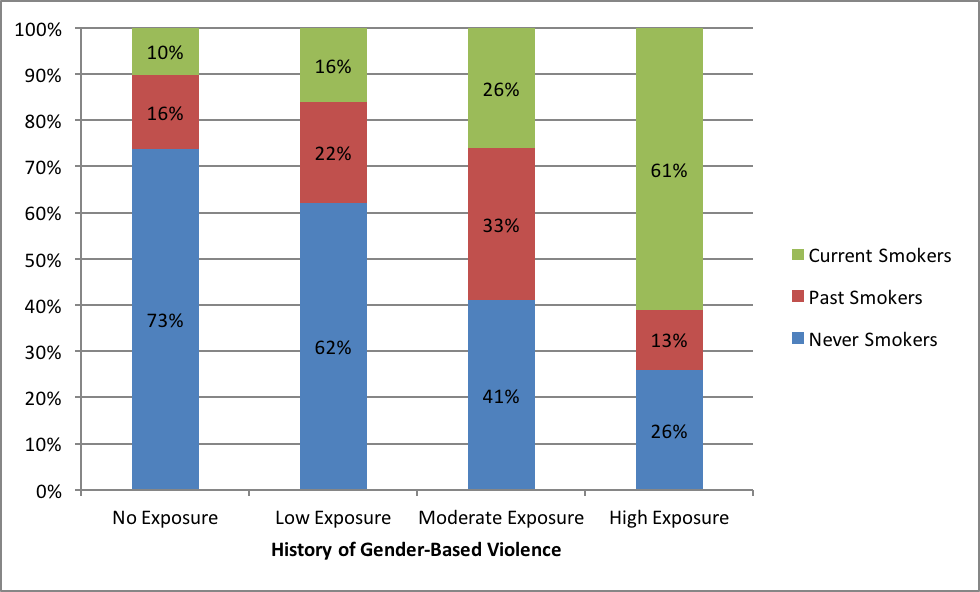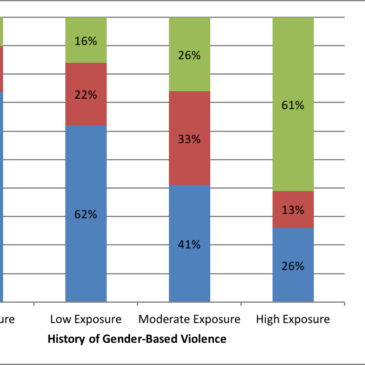Ohio Appalachia residents experience more disease as a result of tobacco use than the general population, the most dramatic example of which is cervical cancer. Women in Ohio Appalachia are 41.7% more likely to die as a result of cervical cancer than the general population. Previous research has identified both smoking and exposure to gender-based violence (GBV) as individual risk factors for cervical cancer, with significantly increased risk if these factors co-exist. Dr. Julianna Nemeth and her colleagues surveyed Ohio Appalachian women to see how common GBV and smoking were in this population, and whether they were related. This week, as part of on Special Series our Special Series on Addiction and Domestic Violence, ASHES reviews their study.
What was the research question?
Is exposure to GBV, including intimate partner violence, associated with smoking status for women in Ohio Appalachia?
What did the researchers do?
Nemeth and her colleagues randomly sampled and interviewed women (n = 398), from three Ohio Appalachian counties. They asked participants about their exposure to types of gender-based violence, such as demeaning emotional abuse, isolation, reproductive coercion by an intimate partner, and coerced and forced sexual abuse by an intimate partner.1 They formed 4 groups of participants: no exposure, low exposure (endorsed one type of GBV exposure), moderate exposure (2-6 types of exposure), or high exposure (7-8 types of exposure). Researchers also classified participants into 3 smoking categories: (1) never smokers; (2) former smokers; and (3) current smokers.
What did they find?
Exposure to any type of GBV increased the risk for smoking (see Figure). The odds of being a current smoker were 1.62, 2.62, and 4.24 times greater among women with low, moderate, and high exposure to GBV, respectively, compared to participants with no GBV exposure, even after controlling for demographic differences in these populations.2

Figure. The percentage of never smokers, former smokers, and current smokers across different levels of GBV exposure. Click image to enlarge.
Why do these findings matter?
Both gender-based violence and smoking create real health risks for women in Appalachia, including cervical cancer. This study documents a clear link between gender-based violence and smoking. Health workers could address both risks together. For example, when survivors of GBV seek social or psychological services, health workers could offer smoking cessation. When women sign up for smoking cessation treatment programs, health workers could screen for and address trauma related to GBV.
Every study has limitations. What were the limitations in this study?
Since this study utilized cross-sectional data, little can be said about the temporal relationship between these variables. Further research is necessary to understand whether GBV exposure actually predicts smoking status. Additionally, due to the very specific sample selected, these results may not be generalizable to men in Ohio Appalachia or to other populations across the country.
For more information:
If you or a loved one wants to quit smoking, here is a list of resources from the CDC. For more information on research related to gender-based violence and resources for advocacy and support programs, please visit these CDC websites on intimate partner violence and sexual violence. For additional tools, please visit the BASIS Addiction Resources page.
— Layne Keating
What do you think? Please use the comment link below to provide feedback on this article.
________________
1 Nemeth and her colleagues used the National Intimate and Sexual Violence Survey
2 These odds ratio calculations examined current smokers versus non-smokers, which included both never smokers and former smokers. The authors did not report separate odds on being a former smoker.





Angwenyi Maobe Michael June 28, 2017
This require a lot of moral reconstruction
Joe June 28, 2017
Love the research question.Just wondering the best data collection approaches.
champ June 29, 2017
Nice aricle. Thanks for sharing
lornah June 30, 2017
Great post.
Kamau June 30, 2017
Interesting facts